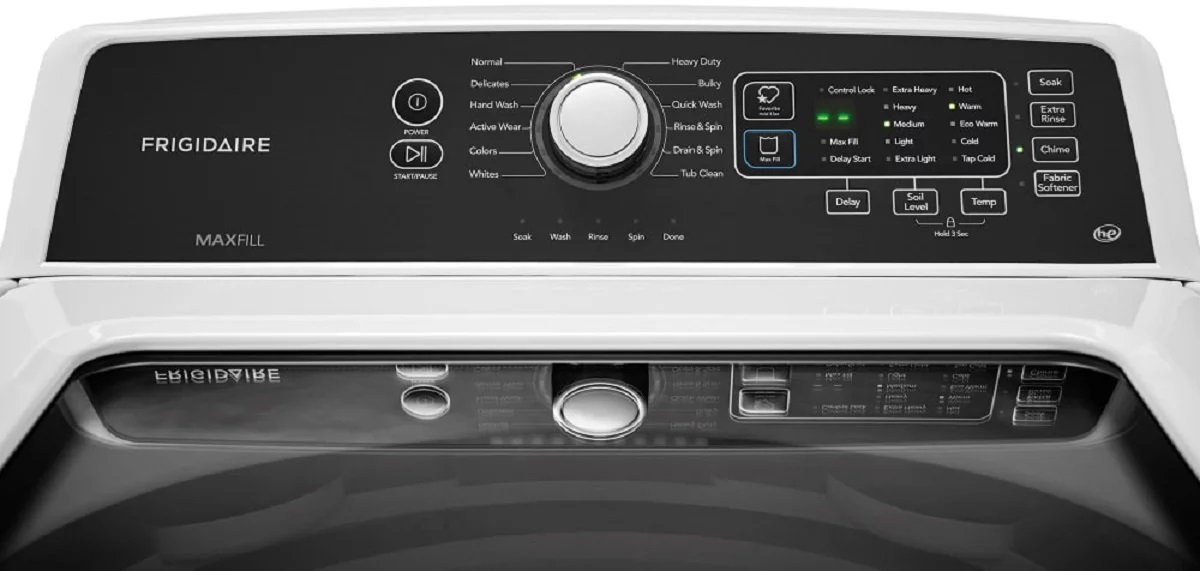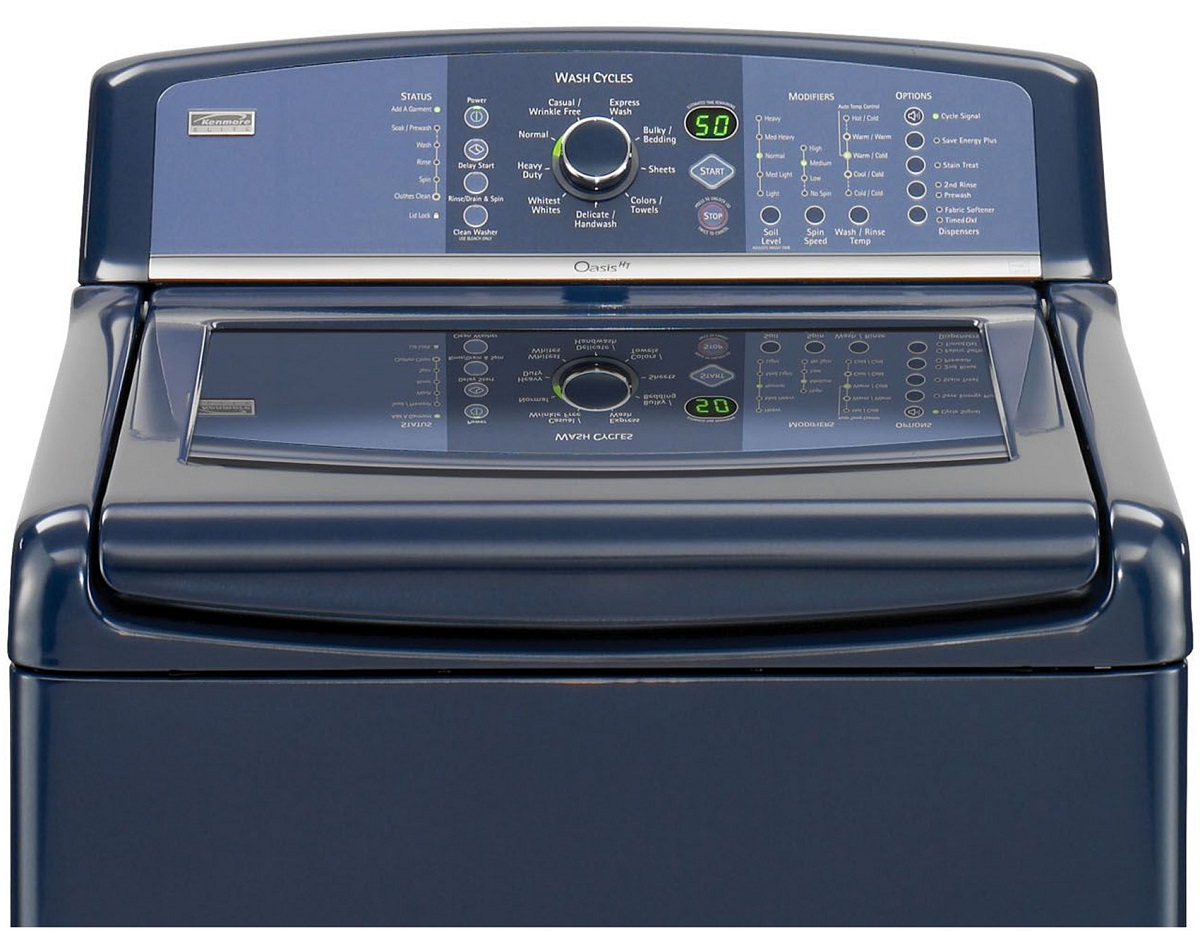Home>Home Appliances>Laundry Appliances>How To Wash Suits In A Washing Machine


Laundry Appliances
How To Wash Suits In A Washing Machine
Modified: March 2, 2024
Learn how to properly wash suits in a washing machine without damaging them. Discover the best laundry appliances and techniques for suit care.
(Many of the links in this article redirect to a specific reviewed product. Your purchase of these products through affiliate links helps to generate commission for Storables.com, at no extra cost. Learn more)
Introduction
Washing a suit in a washing machine may seem like a daunting task, especially considering the delicate nature of these garments. However, with the right approach and careful attention to detail, it is possible to effectively clean a suit using this method. Whether you've spilled coffee on your favorite suit or simply want to freshen it up, understanding the proper techniques for machine washing a suit can help you maintain its pristine appearance without the need for frequent dry cleaning.
In this comprehensive guide, we will walk you through the step-by-step process of washing a suit in a washing machine. From gathering the necessary materials to selecting the appropriate detergent and setting the washing machine, we'll cover everything you need to know to achieve optimal results. Additionally, we'll delve into the crucial steps of drying, ironing, and storing the suit post-wash, ensuring that you preserve its shape and quality.
By following the guidelines outlined in this article, you can effectively clean your suit at home while maintaining its integrity and extending its lifespan. With a bit of care and attention, you can confidently tackle the task of washing a suit in a washing machine, saving time and money without compromising on cleanliness and appearance. Let's dive into the details and learn how to master this essential laundry skill.
Key Takeaways:
- Washing a suit in a washing machine is possible with the right materials and techniques. Preparing the suit, choosing the right detergent, and setting the washing machine are crucial for a successful and gentle cleaning process.
- After machine washing, air-drying the suit and ironing it with care are essential for preserving its shape and quality. Proper storage in breathable garment bags ensures the suit maintains its refined elegance for years to come.
Read more: How To Store Suits
Materials Needed
Before embarking on the process of washing a suit in a washing machine, it's essential to gather the necessary materials to ensure a successful outcome. Here's a comprehensive list of the items you'll need:
-
Quality Suit: Ensure that the suit you intend to wash is suitable for machine washing. Check the care label for specific instructions and fabric composition. Suits made from durable materials such as wool or polyester are generally suitable for machine washing, while delicate fabrics like silk or linen may require alternative cleaning methods.
-
Mesh Laundry Bag: This is a crucial accessory for protecting the suit during the washing cycle. Opt for a large, fine-mesh laundry bag that allows the water and detergent to penetrate while preventing the suit from getting tangled or damaged.
-
Mild Detergent: Choose a gentle, color-safe detergent specifically formulated for delicate fabrics. Avoid using harsh chemicals or bleach, as these can compromise the integrity of the suit's fibers and lead to discoloration or damage.
-
Fabric Softener (Optional): If you prefer to use fabric softener, select a mild, non-abrasive formula designed for use with delicate garments. Keep in mind that some suits may not require fabric softener, so refer to the care label for guidance.
-
Hangers or Drying Rack: After washing, the suit will need to be air-dried to maintain its shape and prevent wrinkles. Ensure you have adequate hangers or a drying rack to facilitate the drying process without causing distortion to the suit's structure.
-
Iron and Ironing Board: Following the washing and drying stages, you'll need an iron and ironing board to remove any remaining wrinkles and restore the suit to its original crispness. Select an iron with variable heat settings to accommodate different fabric types.
By gathering these essential materials, you'll be well-prepared to proceed with the suit washing process, ensuring that each step is executed with precision and care. With the right tools at your disposal, you can effectively maintain the quality and appearance of your suit while achieving a thorough and successful machine wash.
Preparing the Suit
Before placing the suit in the washing machine, it's crucial to prepare it properly to minimize potential damage and ensure a thorough yet gentle cleaning process. Follow these steps to prepare the suit for machine washing:
-
Inspect the Suit: Begin by carefully examining the suit for any visible stains, spots, or areas that require pre-treatment. Addressing these issues before washing can prevent them from setting in further during the cleaning process.
-
Spot Treat Stains: If you notice any stains or soiled areas, spot treat them using a gentle stain remover or a mild detergent. Gently dab the affected areas with the cleaning solution, allowing it to penetrate the fabric for a few minutes before proceeding to the next step.
-
Empty Pockets and Remove Accessories: Ensure that all pockets are empty and any accessories, such as cufflinks or collar pins, are removed from the suit. This step prevents potential damage to the pockets and accessories during the washing cycle.
-
Secure Buttons and Zippers: Before placing the suit in the mesh laundry bag, take a moment to secure any buttons and zip up the zippers. This precaution prevents the buttons from snagging on the fabric or the mesh bag and helps maintain the suit's overall structure during washing.
-
Turn the Suit Inside Out (Optional): For certain suits, especially those with delicate linings or intricate detailing, turning the garment inside out can offer added protection during the washing process. This step minimizes direct exposure of the outer fabric to the agitation of the washing machine, reducing the risk of surface abrasion or wear.
By meticulously preparing the suit for machine washing, you can safeguard its condition and increase the likelihood of achieving a successful and damage-free cleaning outcome. These preparatory measures set the stage for a thorough yet gentle washing process, ensuring that the suit emerges from the machine clean and ready for the next stages of the laundering journey.
Loading the Washing Machine
Once the suit is adequately prepared for machine washing, the next crucial step is to carefully load it into the washing machine. This process requires attention to detail and a gentle touch to ensure that the suit is protected throughout the cleaning cycle. Follow these steps to effectively load the washing machine with the prepared suit:
-
Place the Mesh Laundry Bag: Begin by placing the prepared suit, enclosed in the mesh laundry bag, into the washing machine. Ensure that the bag is positioned in the center of the drum to promote balanced agitation and prevent excessive movement during the wash cycle. Placing the bag strategically can help minimize the risk of the suit getting tangled or wrinkled.
-
Add Similar Items (Optional): If you are washing the suit alongside other garments, consider including items with similar colors and fabric types to maintain a cohesive wash load. However, it's essential to avoid overloading the machine, as this can compromise the effectiveness of the cleaning process and potentially lead to excessive wear on the suit.
-
Check the Machine Capacity: Before proceeding, verify that the washing machine's capacity aligns with the size of the wash load. Overloading the machine can hinder proper water circulation and detergent distribution, impacting the overall cleanliness of the garments. Adhering to the recommended load capacity ensures optimal washing results.
-
Close the Machine Door Securely: Once the suit and any additional items are placed in the machine, ensure that the door is securely closed. This step prevents water leakage and maintains the appropriate environment for the washing cycle to commence without interruptions.
By meticulously following these steps, you can effectively load the washing machine with the prepared suit, setting the stage for a thorough and gentle cleaning process. Attention to detail during this phase contributes to the overall success of machine washing a suit, ensuring that the garment emerges clean and ready for the subsequent stages of the laundering process.
Remember, the loading process sets the foundation for a successful machine wash, and by approaching it with care and precision, you can maintain the integrity of the suit while achieving optimal cleaning results.
Choosing the Right Detergent
Selecting the appropriate detergent is a critical aspect of machine washing a suit, as it directly impacts the cleanliness and longevity of the garment. When choosing a detergent for washing a suit, it's essential to prioritize gentle, color-safe formulas designed for delicate fabrics. Here's a detailed look at the factors to consider when selecting the right detergent for machine washing a suit:
Read more: How To Store A Suit
Fabric Compatibility
The first consideration when choosing a detergent is the fabric composition of the suit. Different fabrics, such as wool, polyester, or blends, require specific care to maintain their integrity during washing. For wool suits, opt for a detergent formulated specifically for wool or other delicate fibers. Similarly, for polyester suits, select a mild detergent suitable for synthetic fabrics. It's crucial to adhere to the care label instructions and choose a detergent that aligns with the suit's fabric type to prevent damage and color fading.
Gentle Formulation
When machine washing a suit, it's imperative to use a gentle detergent that is free from harsh chemicals, bleach, and abrasive additives. Look for detergents labeled as "gentle," "mild," or "color-safe," as these formulations are designed to clean delicate fabrics without causing damage or color loss. Avoid using standard laundry detergents intended for everyday clothing, as they may contain strong enzymes or brightening agents that can compromise the suit's fibers and appearance.
Color Protection
Preserving the color vibrancy of the suit is paramount when selecting a detergent. Choose a detergent specifically formulated to protect colors and prevent fading. Look for detergents that mention color protection on the packaging, as these products are tailored to safeguard the integrity of the suit's hues, ensuring that it retains its original vibrancy after washing.
Fragrance-Free Options
While many detergents feature pleasant scents, it's advisable to opt for fragrance-free or hypoallergenic options when washing a suit. Strong fragrances can linger on the fabric and may be difficult to remove, potentially causing discomfort or irritation. By selecting a fragrance-free detergent, you can minimize the risk of residual odors and ensure that the suit maintains its natural scent and freshness.
Read more: How To Use A Steamer On A Suit
Eco-Friendly and Biodegradable
For those environmentally conscious individuals, choosing an eco-friendly and biodegradable detergent is a responsible decision. These detergents are formulated to minimize environmental impact while effectively cleaning garments. Look for certifications or labels indicating eco-friendly and biodegradable properties to make an eco-conscious choice when washing your suit.
By considering these factors and selecting a detergent that aligns with the suit's fabric type, color protection needs, and environmental considerations, you can ensure that the washing process is gentle, effective, and tailored to preserve the suit's quality. Making an informed choice when it comes to detergent sets the stage for a successful machine wash, allowing you to maintain the pristine condition of your suit while achieving optimal cleanliness and care.
Setting the Washing Machine
Once the suit is properly prepared and the detergent is selected, the next crucial step is to set the washing machine to ensure a gentle yet effective cleaning cycle. Properly configuring the washing machine is essential to prevent damage to the suit while maximizing the cleanliness of the garment. Here's a detailed guide on setting the washing machine for washing a suit:
Water Temperature
Selecting the appropriate water temperature is vital to prevent potential shrinkage or damage to the suit's fabric. For most suits, opting for cold water is recommended, as it helps preserve the integrity of the fabric and minimizes the risk of color bleeding. Cold water is gentle on delicate fabrics and is effective in removing stains and odors without causing damage. Avoid using hot water, as it can lead to shrinkage, distortion, or color fading, especially for wool or sensitive fabrics.
Gentle Cycle
Choosing the right washing cycle is crucial to ensure that the suit is subjected to minimal agitation and friction. Select the "delicate" or "gentle" cycle on the washing machine to reduce the intensity of the wash cycle. These settings typically involve slower agitation and shorter spin cycles, which are ideal for cleaning delicate garments without causing excessive wear or damage. By opting for a gentle cycle, you can maintain the suit's structure and fabric quality throughout the washing process.
Read more: How To Reset A Washer
Minimal Spin Speed
When setting the washing machine, it's important to adjust the spin speed to its lowest setting. High-speed spinning can place undue stress on the suit's fibers and lead to wrinkles or distortion. By selecting the lowest spin speed or opting for a "no spin" option, you can minimize the impact on the suit while ensuring that excess water is effectively drained without subjecting the garment to excessive force.
Detergent Dispensing
Properly dispensing the selected detergent is essential to ensure thorough yet gentle cleaning. Add the appropriate amount of detergent to the designated dispenser or directly into the washing machine drum, following the manufacturer's guidelines and the recommended dosage for the load size. Avoid overloading the machine with excessive detergent, as this can lead to residue buildup and may require additional rinsing cycles to remove the soap entirely.
By meticulously configuring the washing machine with these considerations in mind, you can establish an optimal environment for machine washing a suit. Attention to detail during this phase contributes to the overall success of the washing process, ensuring that the suit emerges clean and ready for the subsequent stages of the laundering journey. Properly setting the washing machine is a critical step in achieving a thorough and gentle machine wash, allowing you to maintain the integrity of the suit while achieving optimal cleaning results.
Drying the Suit
After the suit has completed the washing cycle, the drying process is a crucial step in preserving its shape and fabric quality. Proper drying techniques are essential to prevent wrinkles, shrinkage, and damage, ensuring that the suit maintains its pristine appearance. Here's a detailed guide on effectively drying the suit post-wash:
Air Drying
Air drying is the preferred method for drying a suit after machine washing. It allows the garment to gradually regain its natural shape and texture without subjecting it to excessive heat or mechanical stress. Follow these steps for successful air drying:
-
Gently Remove from the Mesh Bag: Carefully remove the suit from the mesh laundry bag, handling it with care to prevent unnecessary stretching or distortion.
-
Shake Out Excess Water: Lightly shake the suit to remove any excess water. Avoid wringing or twisting the fabric, as this can lead to wrinkles and misshapen areas.
-
Use a Towel to Absorb Moisture: Lay the suit flat on a clean, dry towel and gently press another towel on top to absorb residual moisture. Avoid rubbing the fabric vigorously, as this can cause friction and potential damage.
-
Hang on a Padded Hanger: Hang the suit on a padded hanger to maintain its shape. Ensure that the shoulders of the suit align with the hanger's edges to prevent shoulder dimples or misshapen areas.
-
Select a Well-Ventilated Area: Place the hanger with the suit in a well-ventilated area away from direct sunlight and heat sources. Avoid hanging the suit in a damp or humid environment, as this can prolong the drying process and potentially lead to musty odors.
-
Allow Sufficient Drying Time: Depending on the fabric and ambient conditions, the suit may take several hours to dry completely. Patience is key to ensuring that the suit dries thoroughly without compromising its quality.
Read more: How To Disinfect Washer
Avoiding Direct Heat
It's essential to avoid using direct heat sources such as radiators, dryers, or direct sunlight to expedite the drying process. Exposing the suit to high heat can lead to fabric damage, color fading, and shrinkage, compromising the overall quality of the garment.
By following these meticulous drying techniques, you can effectively preserve the shape and fabric integrity of the suit, ensuring that it emerges from the drying process in optimal condition. Proper air drying is a critical step in the post-wash care of the suit, allowing you to maintain its pristine appearance and extend its longevity.
Ironing and Storing the Suit
Ironing and proper storage are essential aspects of maintaining the impeccable appearance and structural integrity of a suit following the washing process. By following meticulous ironing techniques and implementing strategic storage practices, you can ensure that the suit retains its crispness, shape, and overall quality.
Ironing the Suit
After the suit has been thoroughly air-dried, the next step is to address any remaining wrinkles and restore its polished appearance through ironing. Here's a detailed guide on effectively ironing a suit:
-
Select the Appropriate Heat Setting: Different fabric types require specific heat settings to prevent damage. Refer to the care label and select the corresponding heat level on the iron. For example, wool suits typically require a lower heat setting compared to polyester or blended fabrics.
-
Use a Pressing Cloth: Place a clean, cotton pressing cloth over the suit before ironing to protect the fabric from direct heat. This additional layer helps prevent shine and scorch marks, particularly on delicate fabrics.
-
Start with the Jacket: Begin by ironing the jacket, focusing on the lapels, shoulders, and sleeves. Use smooth, even strokes to remove wrinkles and creases, working from the top down to maintain a consistent finish.
-
Address the Trousers: When ironing the trousers, pay attention to the creases and ensure that the front and back panels are pressed evenly. Take care to avoid excessive pressure on the fabric, as this can lead to shine or distortion.
-
Steam as Needed: Utilize the steam function on the iron to address stubborn wrinkles and achieve a professional, wrinkle-free appearance. Hold the iron slightly above the fabric and release steam as necessary, allowing the heat and moisture to relax the fibers.
-
Hang the Suit After Ironing: Once the suit is ironed, hang it on a sturdy hanger to maintain its shape and prevent wrinkles. Avoid overcrowding the closet to allow adequate airflow around the suit.
Storing the Suit
Proper storage is crucial for preserving the suit's form and preventing wrinkles. Follow these steps to ensure optimal storage:
-
Use Breathable Garment Bags: Store the suit in a breathable garment bag to protect it from dust and maintain its freshness. Avoid plastic covers, as they can trap moisture and lead to musty odors.
-
Provide Adequate Space: Allow sufficient space between garments in the closet to prevent overcrowding and minimize the risk of wrinkles. This also facilitates airflow, preventing moisture buildup.
-
Rotate Suits Regularly: If you have multiple suits, rotate their usage to prevent prolonged pressure on specific areas and allow each suit to breathe and recover its shape.
By meticulously ironing the suit and implementing strategic storage practices, you can ensure that it maintains its pristine appearance and structural integrity. These post-wash care techniques contribute to the overall longevity and quality of the suit, allowing you to enjoy its refined elegance for years to come.
Frequently Asked Questions about How To Wash Suits In A Washing Machine
Was this page helpful?
At Storables.com, we guarantee accurate and reliable information. Our content, validated by Expert Board Contributors, is crafted following stringent Editorial Policies. We're committed to providing you with well-researched, expert-backed insights for all your informational needs.












0 thoughts on “How To Wash Suits In A Washing Machine”